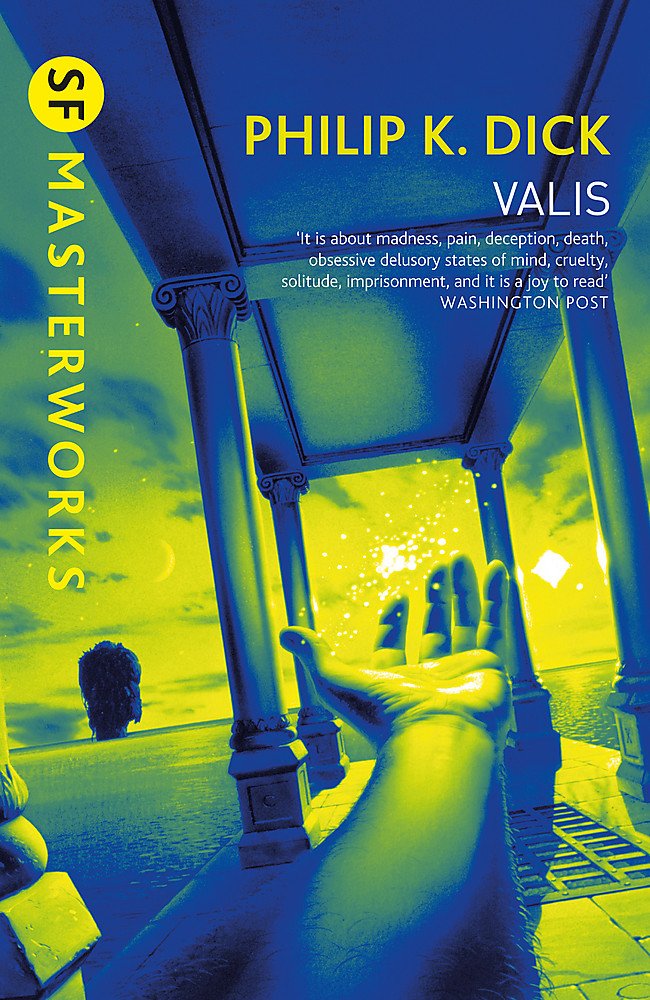An acronym for ‘Vast Active Living Intelligence System’, VALIS was the title Dick gave to his 1981 novel, a fictionalised account of these experiences. He wrote it in part to help him understand what had happened to him, an effort which he continued in all his writings until his death in 1982.
The novel contains a lot of philosophical and religious discussion, which might be off-putting to some, but I thought it was fascinating. A major theme throughout Dick’s work is the illusory nature of reality, and VALIS is in a way the ultimate culmination of this, backed up by ‘proof’ in the form of the pink light. Seeing the way he builds up a rationalisation of his experiences, combining thinkers from history with his own exegesis, is a revealing look into the workings of a broken mind.
This isn’t to say that the book is simply deranged rambling. It’s clear that Dick wrote this in an extreme mental state, but there is a level of technical control that wouldn’t be possible without a significant degree of self-awareness. He even goes to the extent of inserting himself as a character, at one point criticising Horselover Fat, aka himself, for indulging in self-absorbed fantasies to distract himself from reality.
The reality of Philip K. Dick’s life was painful and difficult. He suffered through poverty, a number of failed marriages, a lack of mainstream success, and childhood trauma (he had a twin sister who died six weeks after they were born). He was a heavy drug user, and at one point attempted suicide. He also wrote some of the most original and creative fiction of the twentieth century, which has been adapted into films such as Blade Runner, Total Recall, and Minority Report, and he’s one of my all-time favourite writers.
VALIS is a brilliant book, one that nobody else could have written. It’s the product of a tortured mind wrestling with itself, while at the same time trying to make art. It defies classification, existing on the boundaries of science-fiction, philosophy, and autobiography. It’s certainly one of the best books of his I’ve read, and though it wasn’t the last he wrote, stands as a testament to his achievements as a writer.
Review by Charlie Alcock

 RSS Feed
RSS Feed
